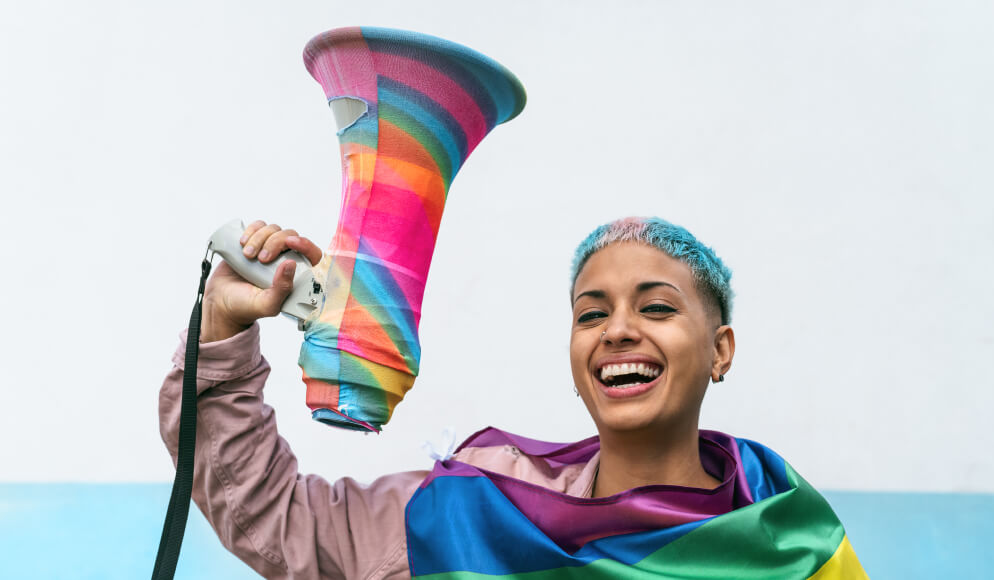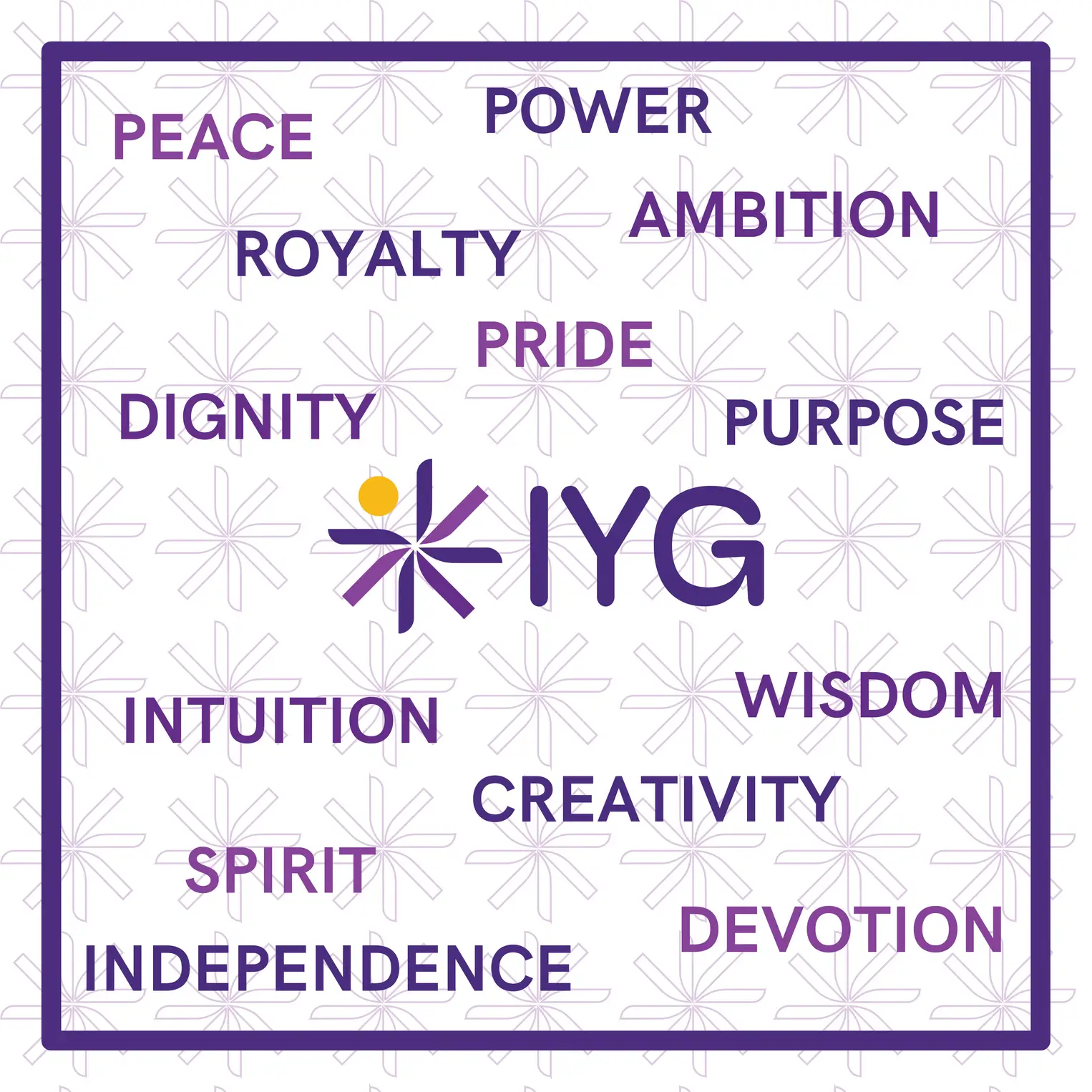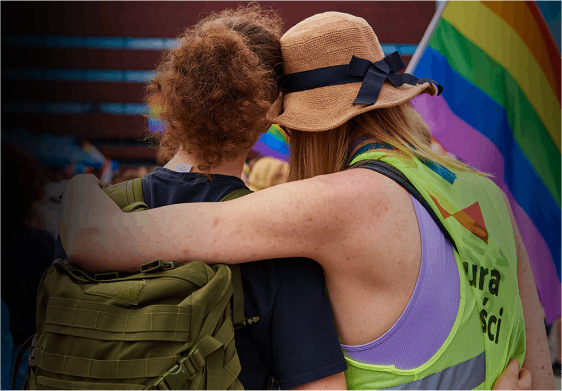While reassessing our brand identity, IYG had several options when it came to color. Many different colors and shades were discussed and tried but we kept coming back to shades of purple and violet. Why is that? Well, there are two main reasons, which we will discuss below:
Association with the Queer Community
The color purple has a long history of association with the queer community. In fact, its usage pre-dates the rainbow flag, which was first introduced in 1978. A blending of red/pink and blue, purple has long been associated with the blurring of gender lines – both in the regard to identity and orientation.
The color was often evoked in the writings of queer artists from Sappho to Oscar Wilde. Violet hues took centerstage in the queer cabaret scene of 1920s Germany. “The Lavender Song” became an anthem of those who shirked heteronormativity as well as the gender binary. Performers often wore vibrant costumes in shades of purple or a boutonniere of lilacs and pansies might have been pinned to the lapel.
Toward the midcentury, shades of violet, purple, and lavender only became more and more apparent in the LGBTQ+ community, first as a subtle signal to others in the know and later a sign of resistance and defiance. Paranoia that queer people might be working in the US government in the 1950s was dubbed “The Lavender Scare.” After the Stonewall Uprising of 1969, supporters of the LGBTQ+ movement marched under lavender banners, sporting purple attire. Their group protests became known as the “purple column.” Other groups that sought queer liberation popped up under names such as the Lavender Brotherhood and the Lavender Panthers. Lesbians, femme queers, and trans women became known as “The Lavender Menace” by transgressive feminists; the term that was proudly reclaimed.
From a color originally reserved for royalty to a symbol of queer empowerment and resistance, purple and all its vibrant hues remain popular amongst the LGBTQ+ community. Like the community, the color comes in countless variations of shade, hue, and saturation. Striking and bold, it is also a reminder of the beauty that pops up in some of the most unlikely of places – think of violet wildflowers popping up amongst a dry, colorless prairie or a cluster of lilacs protruding defiantly from an overwhelmingly green garden. Queer young people are a splash of color who pop up in defiance of the world around them. They are unapologetically vibrant and bold. It is for these reasons that the color represents IYG and the young people we serve.
Universal Color Associations
Universally, purple is associated with several meanings and ideas that we felt fitting to our mission. These meanings include: Peace, power, royalty, ambition, pride, dignity, purpose, intuition, wisdom, creativity, spirit, devotion, and independence. These words make up the very essence of the LGBTQ+ community and those we serve. We are proud to be associated with these individuals and the spirit they represent.



